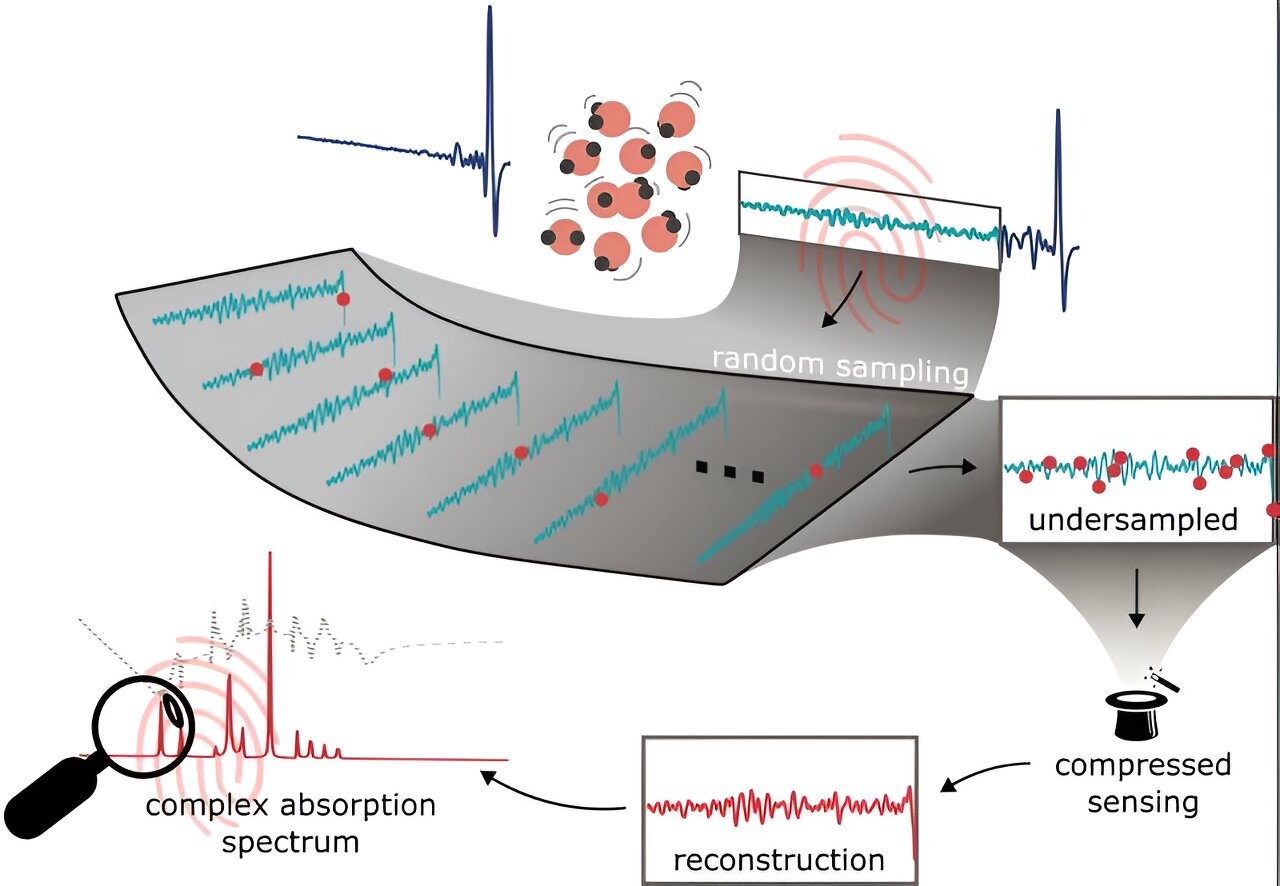Ultrashort pulses play a significant role in spectroscopic applications. Their broad spectral bandwidth enables simultaneous characterization of the sample at various frequencies, eliminating the need for repeated measurements or laser tuning. Moreover, their extreme temporal confinement allows for temporal isolation of the sample’s response from the main excitation pulse.
This response, which carries comprehensive spectroscopic information, lasts from tens of femtoseconds to nanoseconds (10−15 to 10−9 seconds) and is commonly probed by a shorter pulse at various time delays. When merged with other techniques, such as multi-dimensional coherent spectroscopy or hyperspectral imaging, ultrafast spectroscopy facilitates the identification of unknown constituents.
However, the ambition of real-time measurements faces obstacles, primarily due to the extensive data recording required across the high bandwidth spectrum for each pixel, introducing considerable delays in data capture, extending processing time, and increasing data volume.
Researchers have developed a technique to speed up spectroscopic analysis. Kilian Scheffter, a doctoral student working with Hanieh Fattahi, head of the “Femtosecond Fieldoscopy” group at MPL, explains, “The response of molecules to ultrashort excitation pulses is typically sparse in many samples, which implies that the response occurs only at specific frequencies known as molecular fingerprints.”
“By strategically randomizing the measurement points in time, an established approach called compressed sensing can efficiently reconstruct the signal by using fewer data points than the limit dictated by the Nyquist criterion. However, the main challenge has been to change the temporal overlap of the probe pulses and the femtosecond excitation pulses randomly.”
“Collaborating with our partners in Germany and France, we’ve successfully employed acoustic waves to modulate this temporal overlap randomly. This innovation expands the application of compressed sensing to real-time spectroscopic measurement.”
“Accelerating time domain spectroscopy offers several advantages, for example, in simplifying the label-free imaging of fragile specimens, real-time environmental monitoring and open-air diagnostics of toxic and hazardous gases, and molecular endoscopy,” says Dr. Hanieh Fattahi.
The work is published in the journal Ultrafast Science.
More information:
Hanieh Fattahi et al, Compressed Sensing of Field-resolved Molecular Fingerprint Beyond the Nyquist Frequency, Ultrafast Science (2024). DOI: 10.34133/ultrafastscience.0062
Citation:
A molecular fingerprint beyond the Nyquist frequency (2024, April 24)
retrieved 25 April 2024
from https://phys.org/news/2024-04-molecular-fingerprint-nyquist-frequency.html
This document is subject to copyright. Apart from any fair dealing for the purpose of private study or research, no
part may be reproduced without the written permission. The content is provided for information purposes only.

